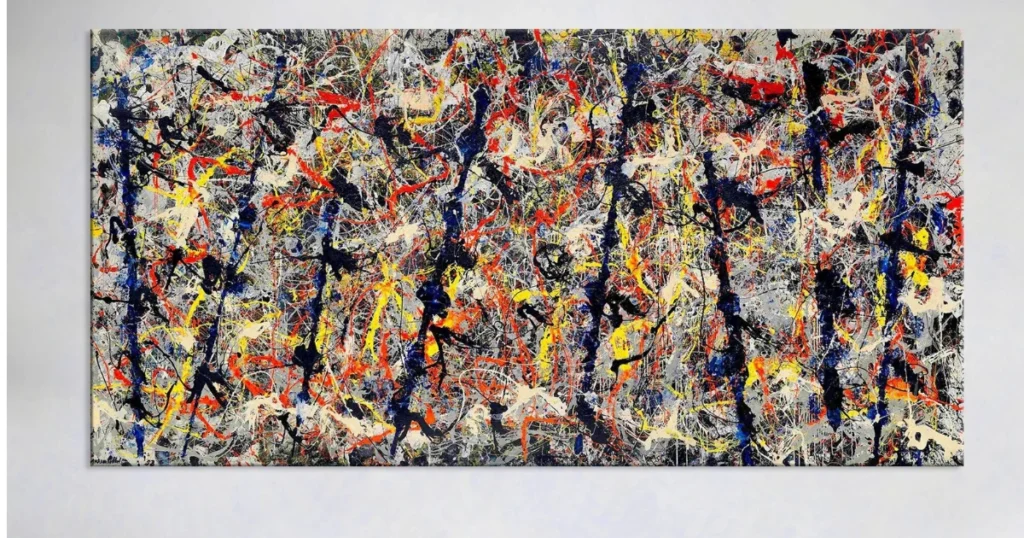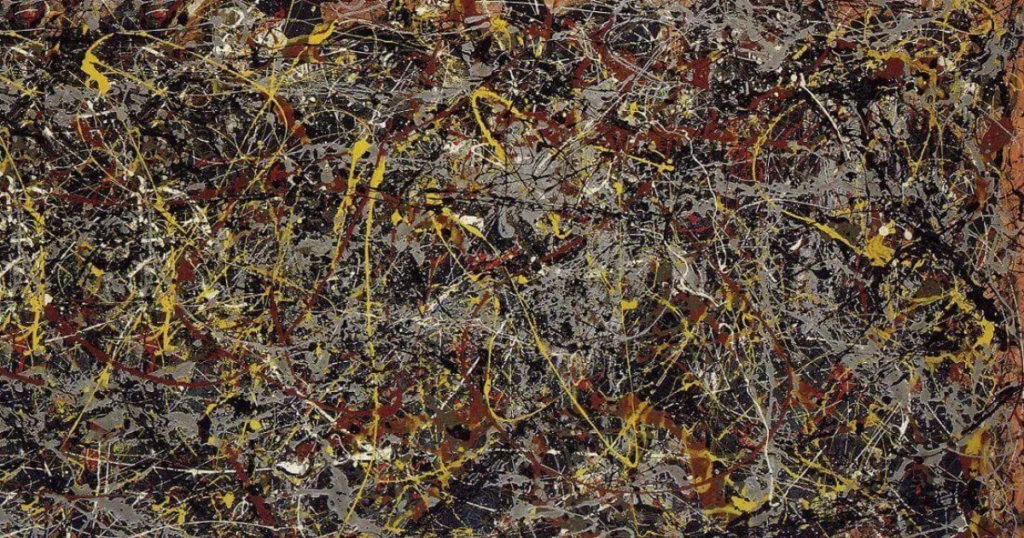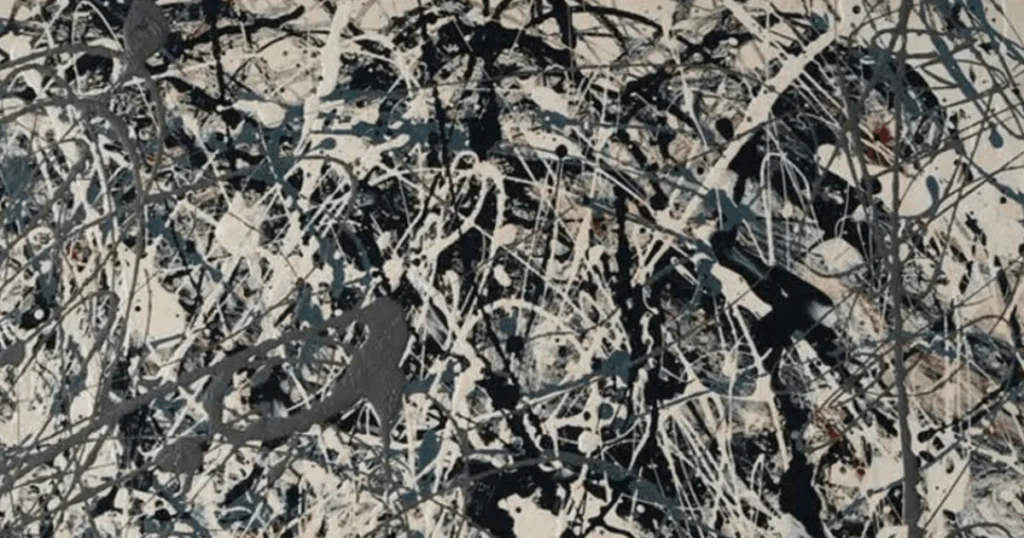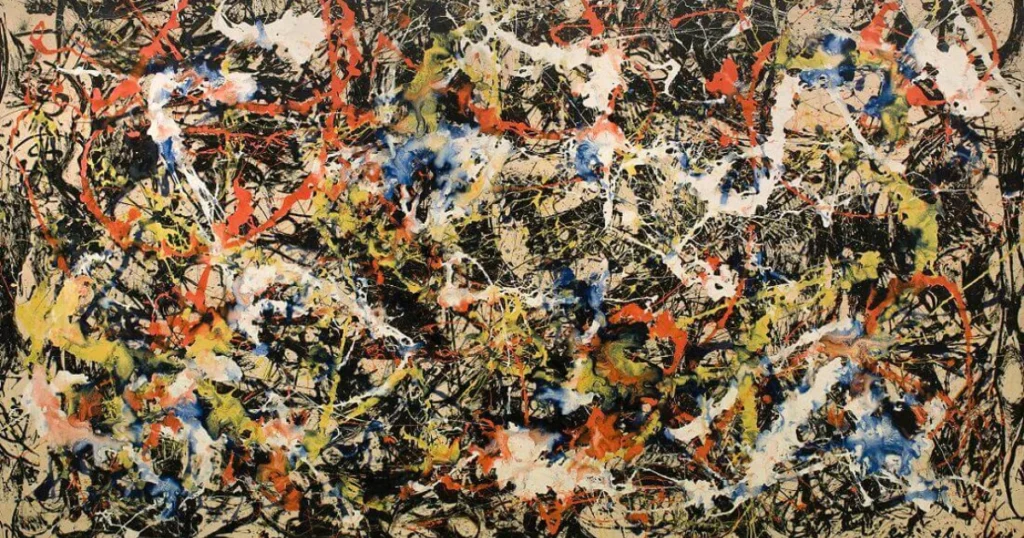Jackson Pollock, an iconic figure in the world of abstract expressionism, revolutionized the art scene with his unique drip painting technique. His works, characterized by their energy, chaos, and complexity, have earned him a prominent place in art history. One of his most famous pieces, a Jackson Pollock painting worth $140 million became a sensation not only for its artistic merit but also for its record-breaking sale. This painting, along with Pollock’s legacy, continues to intrigue art lovers and collectors worldwide.
Who is Jackson Pollock
Jackson Pollock (1912-1956) was an influential American painter and a leading figure in the abstract expressionist movement. Known for his innovative drip painting technique, he transformed traditional methods of painting by using unconventional tools and materials, allowing paint to flow freely onto canvas. Pollock’s work embodies the chaotic energy and emotional intensity of post-World War II America. His iconic pieces, such as No. 5, 1948, have redefined the art world and continue to inspire contemporary artists today.
The Record-Breaking Sale
In November 2006, “No. 5, 1948” was sold in a private sale for a staggering $140 million, making it one of the most expensive paintings ever sold at that time. The buyer was David Martinez, a Mexican financier, although there were conflicting reports about the exact details of the sale. The seller was Hollywood producer David Geffen, who owned an impressive collection of modern art and decided to part with the painting during a wave of record-breaking art sales in the early 2000s.
This sale was significant not only for its monetary value but also for its reflection of the growing demand for contemporary and abstract art. Collectors and investors alike recognized Pollock’s influence on the trajectory of 20th-century art, and Jackson Pollock painting worth $140 million became a symbol of both artistic genius and the skyrocketing value of masterpieces in the global art market.
Why Is Jackson Pollock Art So Valuable?
Several factors contribute to the immense value of Jackson Pollock paintings. First and foremost, his revolutionary approach to art redefined what painting could be. By abandoning traditional brush techniques and embracing the fluidity of paint, Pollock opened up new possibilities for artists to express emotion, energy, and spontaneity. His work has influenced generations of artists and continues to resonate in the contemporary art world.
Additionally, Pollock personal story adds to the mystique surrounding his work. Known for his troubled life, struggles with alcoholism, and untimely death in a car crash at the age of 44, Pollock’s tragic narrative has become intertwined with his art, giving it a sense of rarity and fragility. His paintings, particularly those from his peak years in the late 1940s and early 1950s, are seen as valuable relics of a brief but explosive career.
Moreover, the limited number of Pollock drip paintings on the market makes each one incredibly desirable. As collectors vie for ownership of these iconic works, prices have continued to climb, with “No. 5, 1948” standing out as a prime example of Pollock’s genius and the market’s demand for his art.
Top 5 Most Expensive Paintings Ever Sold by Jackson Pollock
1. No. 5, 1948

No. 5, 1948 is undoubtedly the most expensive painting ever sold by Jackson Pollock. In 2006, this monumental work fetched an astounding $140 million in a private sale, making it one of the highest prices ever paid for a painting. The piece is a chaotic yet harmonious explosion of colors, featuring Pollock’s signature drip technique that conveys motion and emotion.
2. Blue Poles (Number 11, 1952)

Blue Poles is another standout in Pollock’s oeuvre, commanding $61.2 million at auction in 2016. This work features a dynamic composition of vibrant colors, with blue poles acting as a counterpoint to the more chaotic elements of the painting.
3. Number 17A (1948)

Sold for $61.2 million in 2015, Number 17A is another significant piece in Pollock’s collection. The painting displays an intricate interplay of color and form, showcasing Pollock’s masterful command of his drip technique.
4. No. 19, 1948

No. 19, 1948 is celebrated not only for its aesthetic appeal but also for its price, which reached $58.4 million at auction. This painting is characterized by a rich color palette that combines vibrant yellows, blues, and blacks, creating a visual symphony that is both chaotic and serene.
5. Convergence (1952)

Convergence, another masterpiece by Pollock, was sold for $30 million and continues to be a cultural landmark in the art world. This painting embodies the culmination of Pollock’s drip technique, with vibrant colors and dynamic movement that draw the viewer into its depths.
The Impact on the Art Market
The sale of “No. 5, 1948” for $140 million had a profound impact on the art market, signaling a new era of high-stakes private sales and record-breaking auction results. It marked a turning point where modern and contemporary art began to rival, and in some cases surpass, the prices traditionally reserved for old masters like Rembrandt or Leonardo da Vinci.
Following the sale, Pollock’s work became even more sought after, with collectors and institutions eager to acquire pieces that exemplify the revolutionary spirit of abstract expressionism. This sale also inspired a new generation of investors to view art not only as a cultural asset but as a lucrative financial investment.
Why Jackson Pollock painting worth $140 million
There are several reasons why Jackson Pollock painting worth $140 million fetched such an astronomical price:
- Historical Significance: Pollock revolutionized the art world with his abstract expressionist techniques. His work represents a turning point in modern art, bridging the gap between traditional art forms and the avant-garde.
- Rarity: Pollock’s paintings are rare, and most are housed in major museums. The limited availability of his works in the private market adds to their value. No. 5, 1948 is a prime example of his iconic drip painting technique, making it even more coveted.
- Cultural Impact: Pollock became a symbol of post-World War II American art, shifting the cultural center of the art world from Europe to the United States. His work continues to influence artists and movements today.
- Market Dynamics: The art market has seen a consistent rise in demand for works by pioneering artists like Pollock. Wealthy collectors and institutions vie for these pieces, driving prices higher.
Conclusion
The sale of Jackson Pollock painting worth $140 million was more than just a record-breaking transaction—it was a cultural moment that highlighted the enduring power of art to captivate, inspire, and challenge our perceptions of value. Pollock’s revolutionary drip technique and his impact on the world of abstract expressionism continue to resonate, making his works, particularly Jackson pollock painting worth $140 million iconic representations of 20th-century art. Whether viewed as a masterpiece or an investment, the painting remains a symbol of Pollock’s genius and the high stakes of the modern art market.
Read our More Blogs..

